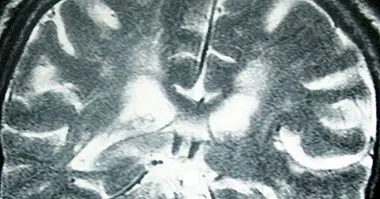The 6 types of visual agnosia and its symptoms
Visual agnosia is an acquired neurological condition that is characterized by a difficulty in recognize and process objects visually . It has been described since the end of the 19th century and nowadays different types and manifestations are recognized.
In this article we will see what are the types of visual agnosia , what were its first definitions and what are its main manifestations.
- Related article: "The 5 types of agnosia (visual, auditory, tactile, motor and corporal)"
What is visual agnosia?
Visual agnosia is an acquired difficulty in identifying objects through vision. It presents itself without damage to the ocular system, without visual alterations and without significant intellectual modifications. It mainly affects the ability to perceive and process elements such as colors, shapes and movements.
In other words, it is a condition in which the ocular ability to perceive the objects persists, but lack the ability to recognize their characteristics and, therefore, to integrate them as an operational mental representation.
Visual agnosia occurs when the visual process is carried out irregularly. These processes involve the participation of the receptors of the retina, which is a prolongation of the central nervous system, with circuits and nerve cells, as well as photoreceptor cells called rods and cones. The latter react to light, and transmit the message to other cells that carry it to the brain.
After a complex process involving different types of cells and microsystems, the message reaches specifically the primary visual cortex of the brain, located in the occipital lobe, near the calcarine sulcus. The specific region associated with the visual system, and therefore with agnosia, is the bilateral occipito-temporal junction.
In the latter, the neurons are distributed in different areas according to the stimuli they process, and broadly they are responsible for analyzing the attributes of the visual images. All of the above helps form an initial representation of the objects and their characteristics , which translates into a specific perception of the observer, and then in a stage of recognition centered on the object and its semantic information (proceeds to the nomination).
In these last stages is where some difficulties that cause visual agnosia have been identified.
Background and first definitions
In the year 1890, the German neurologist Heinrich Lissauer defined this difficulty for visual recognition as "blindness of the mind" or "blindness of the soul", and divided it into two main types: apperceptive and associative. In his theory, strongly based on recognition systems, agnosia is a consequence of the disorganization of the processes necessary to perform visual analysis and attribute meaning .
It was in the year of 1891 when Sigmund Freud, who besides being a psychoanalyst was a neurologist, baptized this condition as "agnosia". The word agnosia comes from the Greek "gnosis" which means knowledge, and the prefix "a" which means "absence of", so it refers to a condition characterized by an "absence or lack of knowledge".
6 types of visual agnosia
Since its first definitions, several types of visual agnosia have been identified. For example, we speak of pure visual agnosia when it manifests itself only through the sensory channel of vision; however, it is often linked to tactile or auditory channels (tactile agnosia, and auditory agnosia).
In any case, some of the main subtypes of visual agnosia are apperceptive agnosia, associative agnosia, prosopagnosia, achromatopsia, alexia and acinetopsia.
1. Apperceptive visual agnosia
Visual apperceptive agnosia is characterized by a difficulty in connecting the parts of an image in a set that is understandable. This translates into a difficulty in understanding the relationships that exist between the objects.
In other words, there is no structuring of the visual stimuli received, which is a condition that affects the discriminative stage of visual identification, which ultimately affects the inability to represent such stimuli . For example, the person may have serious difficulties in representing or matching objects through drawings and images.
It is usually caused by lesions in the temporal lobe or parietal lobe, in both cerebral hemispheres.
2. Associative visual agnosia
Associative visual agnosia is characterized by a difficulty to evoke information associated with the names, uses, origins or specific characteristics of the objects.
Both apperceptive agnosia and associative agnosia are usually evaluated, for example, based on the ability of the person to copy drawings. In this case, the person can perform tasks such as drawing or pairing images, but has difficulty in naming them. In the same way, the person can use the objects that are shown to him, but have difficulty saying what object it is .
3. Prosopagnosia
The prosopagnosia consists in the difficulty to recognize the faces. It is caused by the specific functioning of the fusiform area, which is a region of the brain associated precisely with facial recognition. Prosopagnosia can occur for example in people who have Alzheimer's and other neurodegenerative conditions.
- Maybe you're interested: "Prosopagnosia, the inability to recognize human faces"
4. Achromatopsia
Achromatopsia is characterized by difficulties in recognizing the colors of objects. In some cases there is recognition of the colors but there is no possibility of naming them . It is associated with lesions in the V4 region of the brain, and is related to the regions responsible for regulating linguistic activity.
5. Alexia
The alexia is the difficulty to visually recognize the words. Sometimes people can talk and write without much difficulty, but they keep problems to say what word is about once you see it written .
- Related article: "Alexia and agraphia: the alterations of written language due to brain injury"
6. Acinetopsia
Acinetopsia is characterized by a difficulty in recognizing motor activity. This means that the person has some problems to perceive the movement of objects as a whole. In other words, the movements are perceived as sequences of instantaneous actions without continuity . The latter can occur in different degrees. When the condition is severe, the person may lose the ability to recognize any type of movement.
Bibliographic references:
- Healthline (2018). What causes agnosia ?. Retrieved June 22, 2018. Available at //www.healthline.com/symptom/agnosia.
- Maritza, J. (2010). Visual agnosia Science and Technology for Visual and Ocular Health. 8 (1): 115-128.



















